 1987 Opel Omega A Caravan Dimensions, Size & Specs
1987 Opel Omega A Caravan Dimensions, Size & SpecsMeasurements of the 1987 Opel Omega A Caravan, engineered for optimal performance and comfort
| Dimensions | |
|---|---|
| Length: | 4770 mm187.8 in15.6 ft |
| Width: | 1760 mm69.3 in5.8 ft |
| Height: | 1445-1480 mm56.9-58.3 in4.7-4.9 ft |
| Trunk Capacity: | 520-540 liter18.4-19.1 cu ft |
| Trunk Capacity (Max): | 1850-1865 liter65.3-65.9 cu ft |
| Weight Specifications | |
| Curb Weight: | 1230-1490 kg2712-3285 lbs |
| Maximal permitted Weight: | 1840-2110 kg4057-4652 lbs |
| Tire Specifications | |
| Rims Sizes: | 14-inch rims:
|
| Tire Sizes: |
|
The Opel Omega A Caravan, produced from 1986 to 1993, is a station wagon variant of the Opel Omega A generation. This model is characterized by its balanced dimensions, practical design, and spacious interior, catering especially to families and those needing ample cargo space. Measuring 4770 mm (187.8 inches) in length, 1760 mm (69.3 inches) in width, and with a height ranging between 1445 mm to 1480 mm (56.9 to 58.3 inches), the Omega A Caravan offers a substantial footprint typical of mid-sized station wagons of its era.
In terms of weight, the curb weight varies from 1230 kg to 1490 kg (2712 to 3287 lbs), with a maximum permissible weight between 1840 kg and 2110 kg (4056 to 4653 lbs), reflecting its robust build capable of carrying significant loads. The luggage capacity stands out with 520 to 540 liters (18.3 to 19.1 cubic feet) of standard boot space, which expands dramatically to 1850 to 1865 liters (65.3 to 65.9 cubic feet) when the rear seats are folded down, making it highly versatile for transporting large items.
The Opel Omega A Caravan rides on rim sizes ranging from 14 inches (7J width) to 15 inches (6J and 7J widths), paired with tires sized 185/70 R14, 195/65 R15, and 205/65 R15, ensuring a good balance between ride comfort and handling performance. This combination of size, capacity, and engineering makes the Omega A Caravan a practical and reliable choice in the station wagon category during the late 1980s and early 1990s.
Discover the standout features that make the 1987 Opel Omega A Caravan a leader in its class
Have a question? Please check our knowledgebase first.
The Opel Omega A Caravan, produced between 1986 and 1993, has the following dimensions: a length of 4770 mm (187.8 inches), a width of 1760 mm (69.3 inches), and a height ranging from 1445 to 1480 mm (56.9 to 58.3 inches). These measurements provide a spacious station wagon layout suitable for families or those needing extra cargo space, without being overly large for urban use.
The Opel Omega A Caravan has a curb weight ranging from 1230 to 1490 kilograms (2712 to 3285 pounds), depending on the configuration and equipment. The maximum permissible weight varies between 1840 and 2110 kilograms (4056 to 4652 pounds). These weights reflect its build as a robust and practical station wagon, balancing durability with payload capacity for passengers and cargo.
The luggage capacity of the Opel Omega A Caravan is very practical. With the rear seats in their upright position, the car offers between 520 and 540 liters (18.35 to 19.06 cubic feet) of storage space. When the rear seats are folded down, the capacity dramatically increases to between 1850 and 1865 liters (65.35 to 65.88 cubic feet), providing ample room for larger items or extended cargo needs.
Yes, the Opel Omega A Caravan generally fits into standard garages. With a length of 4770 mm (187.8 inches) and width of 1760 mm (69.3 inches), it is slightly longer but typical garage depths of around 5 meters (196 inches) and widths of about 2.5 meters (98 inches) comfortably accommodate this vehicle. The varying height of 1445 to 1480 mm (56.9 to 58.3 inches) is well within usual garage height clearances.
The Opel Omega A Caravan was the first generation of the Omega series produced between 1986 and 1993, so it had no direct predecessor in the Omega line. However, compared to other Opel wagons of the early 1980s, the Omega A offered a larger and more comfortable station wagon platform, focusing on increased length and cargo space, which made it more competitive in the executive wagon segment.
A width of 1760 mm (69.3 inches) for the Opel Omega A Caravan strikes a good balance between interior spaciousness and maneuverability. This width allows the car to navigate city streets and parking spaces comfortably, while providing enough shoulder room inside for passengers. The width is not excessively wide, making it suitable for standard parking bays and urban traffic situations.
The Opel Omega A Caravan was equipped with a range of tire and rim sizes to suit different trim levels and driving requirements. Rim sizes include 14 inches, 15 inches with widths ranging from 6J to 7J. Corresponding tire sizes include 185/70 R14, 195/65 R15, and 205/65 R15. These sizes offer a good balance of ride comfort, handling, and road grip for the station wagon.
The Opel Omega A Caravan has a height that varies between 1445 mm (56.9 inches) and 1480 mm (58.3 inches), likely depending on trim and suspension variants. This height provides ample headroom for passengers, contributing to occupant comfort especially in the rear seats. Aerodynamically, the relatively low height for a station wagon helps reduce wind resistance and improve fuel efficiency compared to taller wagons or SUVs.
The Opel Omega A Caravan competes with other European executive station wagons of the late 1980s such as the BMW 5 Series Touring (E28/E34), Mercedes-Benz W124 wagon, and the Audi 100 Avant. Size-wise, the Omega A offers comparable length (around 4.7 meters or 15.7 feet), similar widths, and competitive luggage capacities (typically 500-600 liters standard, expandable over 1800 liters with folded seats), making it a well-rounded choice in its segment.
The Opel Omega A Caravan weighs between 1230 and 1490 kilograms (2712 to 3285 pounds) curb weight, with a maximum weight ranging from 1840 to 2110 kilograms (4056 to 4652 pounds). Heavier models tend to feature additional equipment or stronger engines, which can slightly reduce fuel efficiency but improve performance and towing capability. Lighter versions offer better fuel economy and more agile handling, catering to different driving preferences.
Discover similar sized cars.
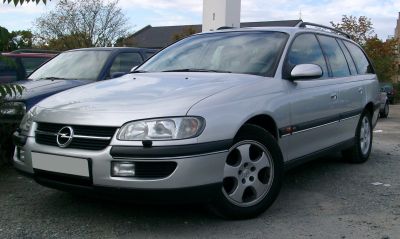
| Production: | 1994-1999 |
|---|---|
| Model Year: | 1994 |
| Length: | 4820 mm189.8 in |
| Width: | 1785 mm70.3 in |
| Height: | 1500 mm59.1 in |
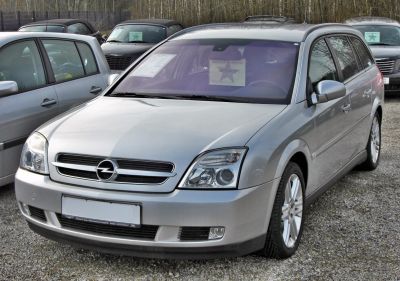
| Production: | 2002-2005 |
|---|---|
| Model Year: | 2003 |
| Length: | 4822 mm189.8 in |
| Width: | 1798 mm70.8 in |
| Height: | 1500 mm59.1 in |

| Production: | 2015-2018 |
|---|---|
| Model Year: | 2015 |
| Length: | 4820 mm189.8 in |
| Width: | 1810 mm71.3 in |
| Height: | 1480 mm58.3 in |
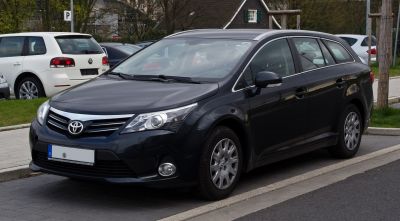
| Production: | 2012-2015 |
|---|---|
| Model Year: | 2012 |
| Length: | 4780 mm188.2 in |
| Width: | 1810 mm71.3 in |
| Height: | 1480 mm58.3 in |
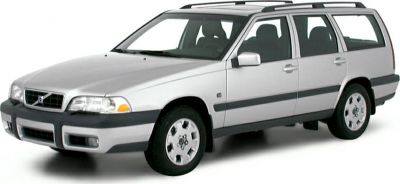
| Production: | 1996-2000 |
|---|---|
| Model Year: | 1997 |
| Length: | 4730 mm186.2 in |
| Width: | 1760 mm69.3 in |
| Height: | 1430 mm56.3 in |
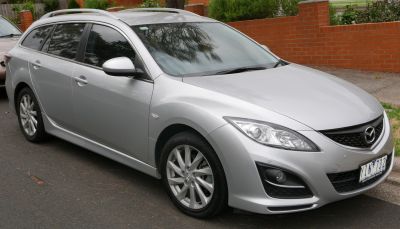
| Production: | 2010-2012 |
|---|---|
| Model Year: | 2011 |
| Length: | 4785 mm188.4 in |
| Width: | 1795 mm70.7 in |
| Height: | 1490 mm58.7 in |
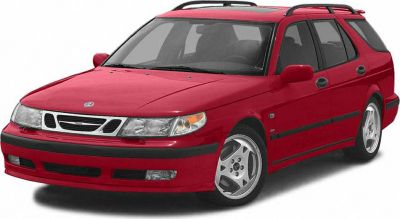
| Production: | 2001-2005 |
|---|---|
| Model Year: | 2001 |
| Length: | 4808-4828 mm189.3-190.1 in |
| Width: | 1792 mm70.6 in |
| Height: | 1492-1501 mm58.7-59.1 in |
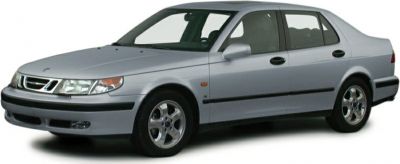
| Production: | 1997-2001 |
|---|---|
| Model Year: | 1998 |
| Length: | 4808 mm189.3 in |
| Width: | 1792 mm70.6 in |
| Height: | 1497 mm58.9 in |
